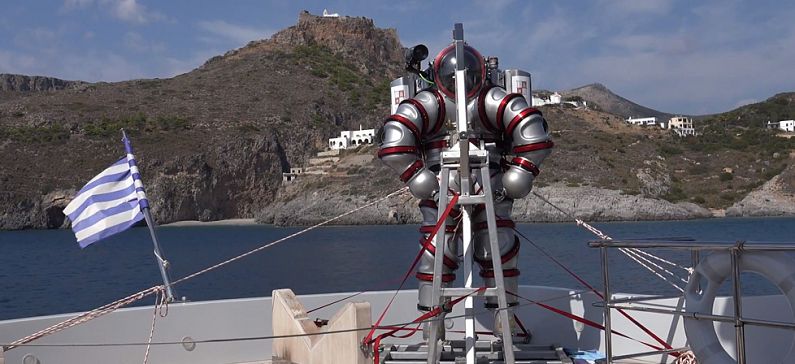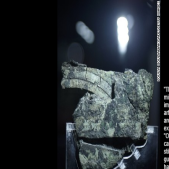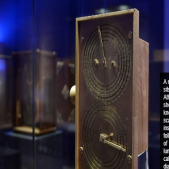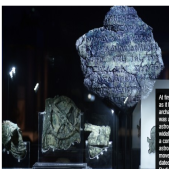
CNN about the secret of Antikythera shipwreck
CNN makes a tribute to Antikythera shipwreck and the latest expedition entitled «The mystery of the ancient shipwreck and the “world’s first computer». The article mentions the history behind the discovery of the Antikythera Mechanism and the latest news concerning the ongoing scientific excavation of the ancient shipwreck.
Read below parts of the CNN article:
In the azure waters off the rocky coast of Antikythera, a remote island in the Mediterranean with a population of less than 50, lies one of the most mysterious shipwrecks of all time. In 1900, sponge divers from the Greek island of Symi anchored along the eastern coastline of the island while waiting for a ferocious storm to pass. What they would stumble upon would stun the world.
Underneath the crystalline waters, lay an incredible wreck undiscovered for thousands of years. And as the site was explored over the next year, they would uncover life-size bronze statues and remarkable artifacts. But it was the 1902 recovery of a clump of calcified stone with mysterious inscriptions that would push the wreck into archaeological lore. The heavily corroded bronze fragments would turn out to be what has been described as the world’s earliest known «computer,» designed in the first century BC — the Antikythera Mechanism. Built to track the astronomical calendar and lunar movements, later radiographic image analysis of the mechanism revealed 30 intricate gear wheels. Famed underwater explorer Jacques Cousteau visited the site in 1976 to film a documentary and returned from below the surface with treasures galore. Since then, the site has remained dormant under the aegis of the Hellenic Ministry of Culture for almost 40 years.
Now, an international team of scientists and archaeologists is returning to Antikythera, armed with the most advanced marine technology available, to undergo the first-ever scientific excavation of the ancient shipwreck.
«The Antikythera shipwreck is maybe the most important, most famous shipwreck from antiquity,» says Brendan Foley, an archaeologist from Woods Hole Oceanographic Institution and co-director of the expedition.
«We are hardcore scientists and archaeologists. We hate to speak of treasure but in this case, it’s actually a treasure ship and there are just no two ways about it.»
Analysis of the reclaimed artifacts has dated the vessel to the first century BC, while a horde of gold coins retrieved from the water suggests the boat’s origins lie east, from Asia Minor. But no one knows for certain how big it is, what it was doing there or why it went down. Yet.
The team of maritime archaeology experts have been at the site since mid-September. Supported by the Hellenic Navy, Foley and his 32-man team have been provided with research vessels capable of raising artifacts weighing up to five tons straight off the seabed.
«You never want to speak about absolutes or guarantees but I’ve never felt more confident in a shipwreck that there is going to be something interesting on it,» Foley says. «In the 1901 and ’76 operations, they were getting gemstones, gold stones and human remains. And human remains almost never come up from ancient shipwrecks. So with modern ancient DNA analysis, there are all kinds of questions that can now be posed if we recover some.»
With the location at around 155 meters deep, it’s not particularly hard to get to.
«At the most basic level, if we can come away from this important shipwreck site with a very, very good map and a much better understanding of the layout of the wreck, from that data we can begin to pose new questions to drive forward the research,» explains Foley, who has worked with the Ministry of Culture in Greece for the last decade.
The international expedition started by mapping out the site using «Sirius,» an autonomous underwater vehicle (AUV) from the Australian Centre for Field Robotics. The AUV will conduct a high-resolution survey of the wreck site to create precise documentation of the expansive debris field. Meanwhile, technical divers equipped with metal detectors will be working to determine the extent of the wreckage under the sediment before test trench excavations can begin.
Underwater Iron Man
The team also has come to Greece with a next-generation diving suit that could revolutionize the future of ocean exploration. Looking like something straight out of «Iron Man,» the Exosuit is an atmospheric diving system, created by Vancover-based Nuytco Research, originally designed for offshore exploration of oil fields. Repurposed for the expedition, Foley says it offers the team extensive bottom time at the site.
«The system itself for the Exosuit has life support for something like 40 hours if all went to hell. I mean, really, it’s when you get tired and sore, and want to have a sandwich and use the toilet, that you come up,» he says.
Source: CNN










